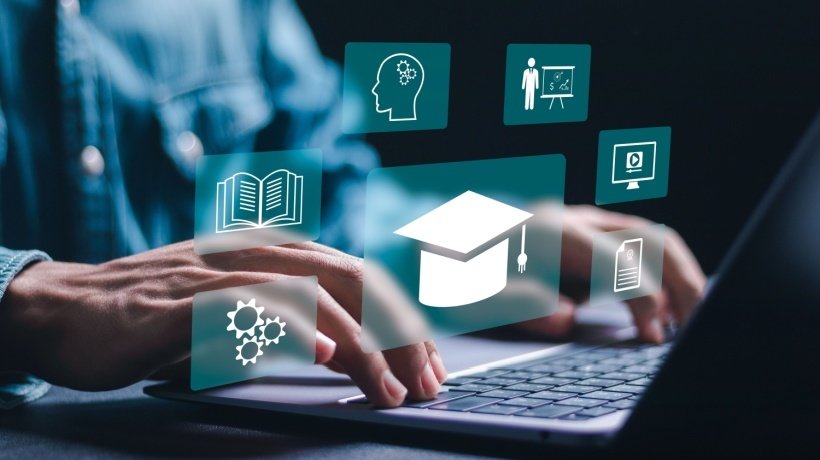The SaaS Model: Making Customer Success Today’s Critical Training Objective
For many years, companies viewed customer training as another revenue stream. A “smile sheet business” if you will. Are we doing a good job? Do our customers like what they learn? Etc. The focus was on quantity served, not necessarily quality.
Enter the cloud.
With the rise of cloud-based products, we’ve had to shift how we view customer training and what value it serves our organizations. It’s too easy (and tempting) for customers to move to another vendor once their subscription ends. So, customer retention is key! Here are 6 tips on how I helped transition my company from customer revenue to a retention-focused customer training organization.
1. Stop The Churn
With a SaaS-based model, it’s much less expensive to renew a customer than acquire one. And the rise of customer retention models/measures have spotlighted that churn is a real problem. Which is why many companies like Plex have shifted their focus from how many customers they can sell training to, to how well we can train our customers to build and reinforce their loyalty.
Tip #1: To succeed, you need to look at the total customer experience. And that goes far beyond your NPS (net promoters score).
2. Turn Data Into Success
As a cloud company, we have massive amounts of data on what our customers do, what modules they touch, how frequently they train, and so on. The challenge is turning this data into a roadmap that drives long-term customer retention.
Let’s say your customer spends $100k on a subscription and they have every type of training you offer, but they’re only using 20% of your product’s features. Does this mean they’re less likely to renew when the next shiny new vendor comes along and shows them all of their upgrades and added features? This is critical data that needs to be analyzed.
Tip #2: Instead of focusing on training sales, you should be shifting your focus to what your organizations doing for customer success, and the data that’s driving it.
3. Create Training That Sticks
In the education space, we have a huge play in this area. If we offer exceptional training or industry certification for our software, we can create loyal users that will select and promote our product wherever their careers take them, and employers, conversely, will see our certification as a benchmark for quality.
Red Hat is a great example. They have a “shining star” certification program. It’s very hard to achieve, universally renowned and there are 100s of 1,000s of certified professionals worldwide. They’ve turned their certification into something very valuable.
Tip #3: Your challenge as an education team is to use extreme product knowledge to create the same kind of brand stickiness and loyalty that keeps people suggesting your software as they climb the ranks from IT Manager to CIO.
Again, the shift in the SaaS model to retain customers is huge, because it’s so easy to move when you’re in a cloud and a subscription model. Especially in the ERP world. The days of ripping and replacing a huge ERP implementation will only get easier when everyone is in a cloud model and you can migrate swiftly. We’re all now in the business of trying to prevent that.
4. Enlist A Modern Learning Management System
Tip #4: Now is the time to show your organization the new business value of training – specifically how a trained customer behaves quite differently than an untrained customer.
Go back to your data and try to make dollar to dollar correlations like “We’re seeing a reduction in support calls because we have XX newly trained customers” or “We’re seeing an increase in renewals because we have a XX% increase in trained customers”, etc.
Enlisting the help of a modern LMS with solid analytics, reporting and integrations can speed this process. We chose our Learning Management System because of its Salesforce integration. We want to put the total customer experience in direct view of our sales team by embedding it into the Salesforce record. So, they can see who’s been trained and on what; and we can see their customers’ purchases and make correlations between their buying behavior and training consumption. We plan on enabling this LMS-Salesforce integration soon, which will help us predict (and prevent!) churn.
This will be a huge shift from the way we used to record the behavior of trained customers. Rather than a “thumbs-up” approach of “I liked your training” and “Your instructor was fun”, we’ll now be more focused on what value we can give back to the business and our sales team. So, they can predict customer behavior as part of their holistic, 360-degree view, and even leverage this data to improve cross-sales and upsells.
5. Avoid The Key Traps
If you’re beginning or already in the midst of your customer training shift, here are tips for avoiding common, costly obstacles:
Avoid A Content Dump
We’ve taken great pains to organize our content into very logical learning paths for specific roles. So, whether you’re an accounts payable person, shipping clerk or a quality manager, your training path is abundantly clear. I often liken it to a Monopoly board where it’s “Start here, do not pass go and do not collect $200 until you’ve completed these steps in your learning”.
Don’t Get Stuck In One Learning Mode
We did a huge course audit to look for gaps in learning paths. And by organizing the learning paths, we could identify key pieces of content that were applicable to a given learning path. We also found that our new learning paths needed a blended learning approach. So, instead of making everything self-paced, learners are also directed to attend an ILT course or a click-through, hands-on or simulated experience.
Tip #5: Try to give your customers different learning touch points so you’re not just talking at them the entire time.
Push Past Checking Boxes
Before the SaaS model, there was a common desire to do a “peanut butter spread” coverage for product know-how. We would just check our boxes: “Do we have a module on this screen? Check. On this screen? Check.” Today, with customer retention in mind, we need to push past this to identify what our customers must know to be successful in their roles. What do they need to do on a day-to-day basis to succeed in their jobs? Once you do this critical job task analysis, you can then apply the outcomes to your learning paths to better organize the content and fill key content gaps.
One Size Doesn’t Fit All
Since we sell to manufacturing companies, we serve customers of all sizes. Some are just a 10-person shop where everyone does everything; while others have 100s of users with very granular roles. A lesson we’ve learned is to not overwhelm smaller customers with information. Even if their users are doing multiple roles, you should still give them logical learning paths. This will make the learning much more sticky and valuable.
6. Know Your Objective
Tip #6: If I had to give one best practice for navigating the shift in customer training – from revenue to enablement, it would unquestionably be to learn what your objective is early on.
In my experience, there are plenty of software companies who want enablement, but they don’t know why. They want it because it’s the right thing to do for their customers, but they haven’t decided if they’re going to be: Driving it as a cost center for a more knowledgeable customer-base (which leads to product adoption), or using it as a revenue-generating services arm (which does result in some product adoption, but really the goal is to make money for the company).
There’s a stark difference between the two, and you can’t do both. You can’t train all of your customers and partners for free and hit your revenue goals. It’s just an impossible feat. So, getting extreme clarity on what your company wants you to accomplish and what your key metrics are is dire. And if nobody knows what those key metrics are, drive them yourself.
For example, if you feel your enablement function is really centered around boosting your services revenue, you need to build highly profitable, repeatable learning solutions like a subscription offering. This, over time, gives you a reoccurring line of revenue that becomes cheaper and cheaper to produce because you have a wealth of content that can be consumed and reused.
If, on the other hand, your enablement function is strictly for product adoption, your P&L model needs to reflect that. You’ve got to find a way to get yourself to a breakeven mode.
If your company still wants both, then you need to have the difficult conversation of explaining why that’s not possible. Don’t set yourself up for failure. Get clarity first, then use it to drive your strategy.
Transitioning from revenue to retention-focused customer training is a long journey, but definitely worth the time and energy. Best wishes to you on your transformation!
Free Resource: How to Select the Right LMS for Your Customer Training








